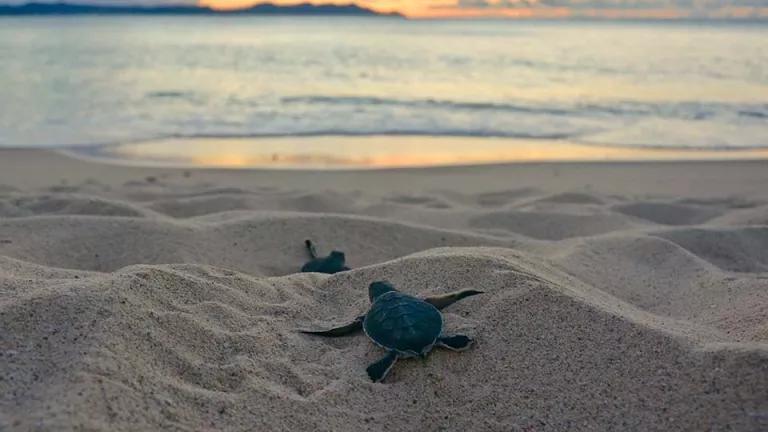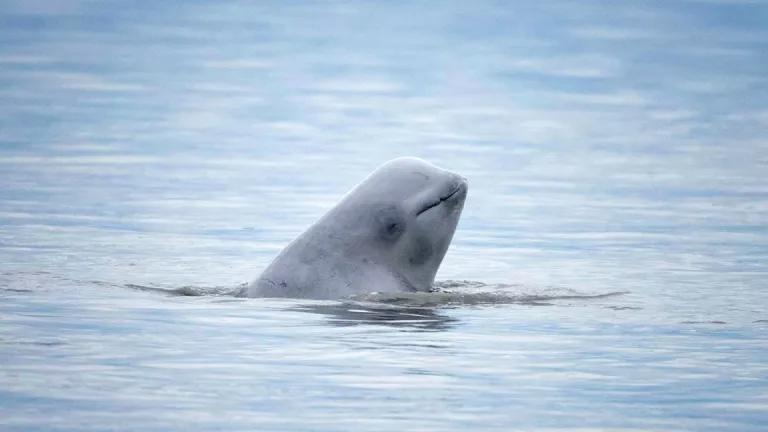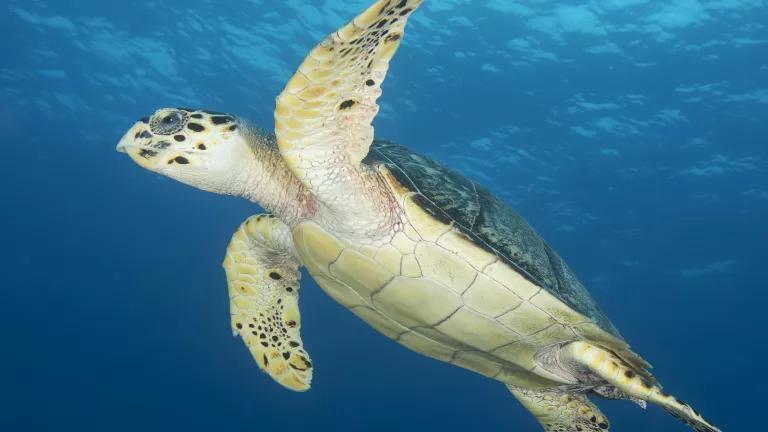Caring for Our Ocean in Crisis

Our ocean is in a state of collapse. Climate change is warming the ocean, killing coral reefs and forcing ocean animals to seek cooler waters. The ocean has absorbed 90% of the planet’s heat over the last 50 years. Warmer waters are causing fundamental and sudden shifts in the ocean ecosystem—changing the variety of marine species and threatening the collapse of natural systems.
Air pollution has also made the ocean more acidic, which is making it harder for oysters, scallops, and other shellfish to grow their protective shells. The ocean has absorbed more than a quarter of the carbon dioxide produced by fossil fuels, causing a 30% increase in ocean acidity since the Industrial Revolution.
Millions of species worldwide are at risk of extinction because of human activity—many within our lifetime. Years of chronic overfishing, pollution, and habitat destruction have strip-mined the ocean. More than one-third of marine mammals and nearly one-third of sharks, shark relatives, and reef-forming corals are threatened with extinction.
The latest science paints a dire picture for the ocean, but also points the way for us to create a better, healthier future—if we act now.
To turn the tide of ocean extinction and reinforce our defenses against climate change, leading scientists have called for protection of at least 30 percent of our natural lands and waters, and 30 percent of our ocean area by 2030. This approach, “30 by 30,” would yield tremendous benefits and not just in terms of conserving the places and animals we love. These strong protections for the ocean also pay off economically—to the tune of an estimated trillions of dollars. The global seafood industry alone could see an increase in annual profits of $53 billion. It will also help sustain the ocean systems that provide us with every other breath we take and supply protein for billions of people.
The U.S. should protect at least 30 percent of our ocean area by 2030 to help advance the global goal, and to help all of us who rely on the ocean for food, jobs, and recreation here at home. America's ocean waters provide millions of jobs and billions of dollars in economic benefit. But we are not immune to the global climate and biodiversity dangers. Black sea bass, once common off the coasts of North Carolina and Virginia, now concentrate off New Jersey. In Maine, lobsters are experiencing shell disease and migrating north to cooler waters.
We need to boost ocean protections here in the U.S. At a time when the Trump administration has just stripped protections from one of the country’s greatest ocean treasures off the coast of New England—we have our work cut out for us here at home to reach the goal of 30 by 30.

About 23 percent of America’s ocean is highly protected through marine protected areas (MPAs). These are parks in the ocean where at-risk sea life can recover from the pressures of climate change without further stress from industrial uses like drilling, mining, and commercial fishing. Creating a network of these areas allows animals safe stepping stones as populations shift to escape warming waters.
California’s marine protected area network, completed in 2012, offers a glimpse of what this looks like: in just five years, species increased in abundance up and down the coast. In fact, the quantity of key fish species in the Northern Channel Islands reserves increased by 52% in a five year period. We need to build from successes like this to help protect the range of biodiversity found throughout America’s waters.
One challenge is that 99% of U.S. ocean area that is strongly protected from industrial development is found in the far reaches of the Western Pacific. That leaves us a ways to go to ensure the unique wildlife found in the country’s other marine regions receive protections. Together with scientists and a range of stakeholders, we need to identify key biodiversity hotspots throughout the U.S. ocean and take steps to protect these special areas critical for wildlife feeding, breeding, and migrating.
The first step to protecting our ocean is gaining support for the Thirty by Thirty Resolution to Save Nature (S.Res.372 and H.Res.835). Setting a target, like we’ve done for clean energy goals, is a crucial action to get the country to rally together for our planet’s health. The sooner we’re all on board with the goals, the sooner we can get down to brass tacks and make this happen. Contact your Senators and Representatives to encourage them to sponsor this important effort, or to thank them for standing up for nature.
Working together, we can shape a new, healthier ocean future.



